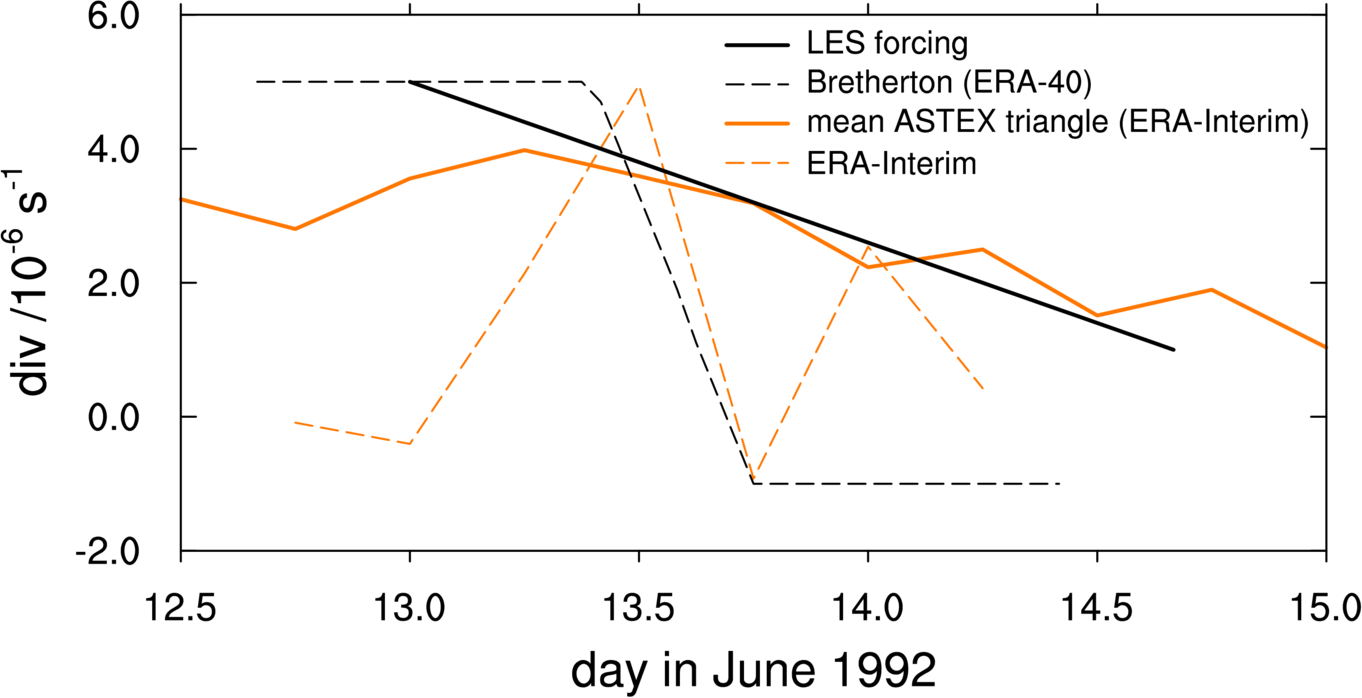General set up of the ASTEX simulation
The initial profiles and time-varying boundary conditions for the first round are given in the file astex_input_v5.nc. The profiles extend well above the LES domain. The humidity, temperature and ozone mixing ratio can be used to initialize the full radiation scheme. The initial vertical profiles for horizontal wind components (u,v), liquid water potential temperature (θL), and total water content (qT) are identical to the GCSS ASTEX A209 model intercomparison study.
Time of the simulation
Duration: 40 hour, starting 13 June 00 UTC.
Surface Conditions
Surface fluxes of heat and moisture should be computed from the prescribed sea surface temperature. The reference pressure p0 = 1000 hPa and the surface pressure ps = 1029.0 hPa is set to a constant value during the Lagrangian. We propose to use a constant latitude=340N and longitude=250W. This has only small effects on the coriolis force and the shortwave forcing.
MicrophysicsThe cloud droplet concentration is 100 cm-3. The geometric standard deviation of the cloud droplet spectrum needed to calculate the cloud droplet sedimentation flux, σg= 1.2.
Time varying boundary conditions and large-scale forcings
The time-varying SST is taken from Chris Bretherton's ASTEX Lagrangian case description. We found that the large-scale divergence from ERA-Interim deviates significantly from the ERA-40 fields analysed by Chris Bretherton. The latter results however cause a mean tendency in the free atmosphere that is close to what is observed. Below 1600 m the value of the large-scale subsidence is based on this divergence rate, and set to a constant value above.

Also the geostrophic wind velocities Ugeo and Vgeo are varying with time. In the last part of the ASTEX First Lagrangian the magnitudes of the horizontal wind velocities had significantly decreased. The time-varying values of the geostrophic winds force the modeled north-south component of the wind velocity in the free atmosphere to the observed wind velocity. Note that if you apply a sponge layer in which the mean wind velocity is nudged towards the geostrophic wind velocity, this will cause an unphysical windshear just below the sponge layer. This can be solved by nudging the wind velocity in the sponge layer towards the observed mean wind velocity in the free atmosphere.